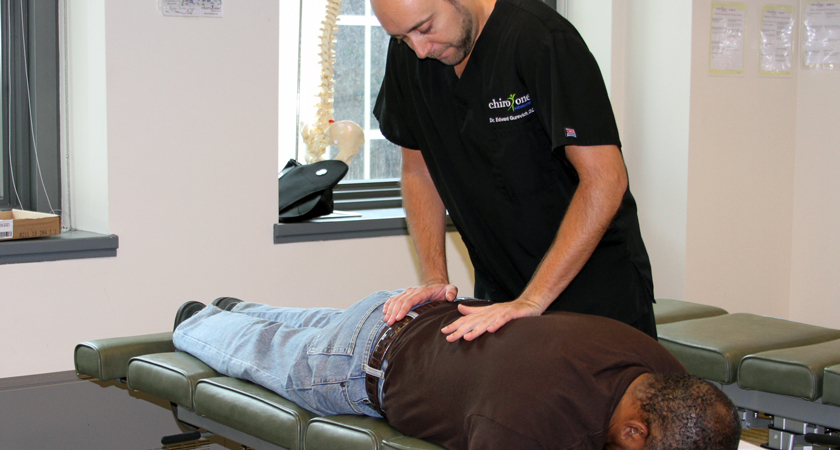
Back Pain Relief: Why a Chiropractor Near Me Could Be the Answer
Searching for back pain relief? Discover why choosing a chiropractor near you could make all the difference.

“If you would seek health, look first to the spine”- Socrates
When most people think about health, they picture diet, exercise, and sleep. But one key factor often gets overlooked — spinal alignment. Your spine isn’t just a stack of bones that helps you stand tall; it’s the central pillar that supports your body’s structure and protects your nervous system.
So, what is spinal alignment exactly? Spinal alignment refers to how the vertebrae in your spine are positioned relative to each other. In an ideal alignment, the spine’s natural curves — cervical (neck), thoracic (mid-back), and lumbar (lower back) — are balanced. This allows your body to move efficiently, maintain posture, and prevent unnecessary strain on muscles, joints, and nerves.
When those vertebrae shift out of position — a condition often called spinal misalignment — it can lead to discomfort, reduced mobility, and even health issues in other parts of the body.
Your spine is home to your central nervous system, which connects your brain to every organ, muscle, and tissue in your body. Think of it as the information highway for all body functions — movement, digestion, heart rate, mood, and more.
When your spinal alignment is off, it can interfere with nerve communication, causing ripple effects throughout your system. A study published in the Journal of Clinical Medicine found that spinal adjustments could have a beneficial impact on the nervous system with regard to managing musculoskeletal pain.
Spinal health and the nervous system are deeply connected. Proper alignment supports clear communication between the brain and body, helping you function at your best.
You might think you’d know if your spine was out of alignment, but the signs can be subtle at first. Here are a few common clues:
| Physical Signs | Functional Signs |
| Uneven shoulders or hips | Limited range of motion |
| Frequent neck or back pain | Muscle tightness or weakness |
| Headaches or jaw tension | Fatigue or poor sleep quality |
| One leg feeling “shorter” than the other | Recurring stiffness, especially after rest |
If any of these sound familiar, your body could be compensating for misalignment — even if you don’t feel constant pain.
Taking care of your spine isn’t just about preventing back pain. The benefits of proper spinal alignment extend to nearly every aspect of health and wellness:
Research supports these connections. A 2023 study by BMC Public Health noted that posture and spinal balance play a key role in musculoskeletal health, particularly as we age. In short — maintaining alignment today can help protect your mobility tomorrow.
Your spine responds to your habits. Long hours at a desk, slouching while scrolling, or sleeping in awkward positions can all affect posture and spinal alignment over time.
Try building these small habits into your routine:
Even a few posture adjustments can make a big difference in how your back — and body — feel.

Chiropractic care for spinal health focuses on restoring and maintaining proper vertebral alignment through gentle spinal adjustments. These spinal adjustment benefits include improving mobility, reducing nerve interference, and promoting the body’s natural ability to heal itself.
While many people first visit a chiropractor after an injury or when in pain, preventative care can help you stay ahead of discomfort. Regular check-ins and adjustments can help keep your spine — and nervous system — functioning at their best before problems arise.
Think of it as a tune-up for your body’s most important structure.
Frequently Asked Questions (FAQ)
Q: What causes spinal misalignment?
A: Common causes include poor posture, prolonged sitting, repetitive movements, sports injuries, or even stress (which can cause muscles to tighten and pull the spine out of position).
Q: Can spinal misalignment affect more than just my back?
A: Yes! Because your spine protects your nervous system, misalignment can affect nerve signals — potentially impacting digestion, energy levels, sleep, and mood.
Q: How can I tell if I need a chiropractic spinal alignment?
A: Persistent back, neck, or shoulder discomfort, frequent headaches, uneven posture, or stiffness after rest are all signs it might be time for a check-in with a qualified chiropractor.
Q: Is it safe to get a spinal adjustment?
A: When performed by a licensed and trained professional, chiropractic spinal adjustments are considered safe and effective for many people. Research supports chiropractic care as a low-risk, non-invasive option for improving spinal health and mobility.
Your spine is more than your backbone — it’s your body’s foundation. When it’s aligned, your nervous system, posture, and overall health can thrive.
Prioritizing spinal alignment isn’t just about avoiding pain; it’s about investing in your long-term wellness. From mindful posture to preventative chiropractic care, taking small steps now can help you move through life stronger, more comfortably, and pain-free.
Subscribe and get news, articles & offers sent right to your inbox each month.
"*" indicates required fields
By subscribing you are agreeing to the Terms and Conditions and Privacy Policy.